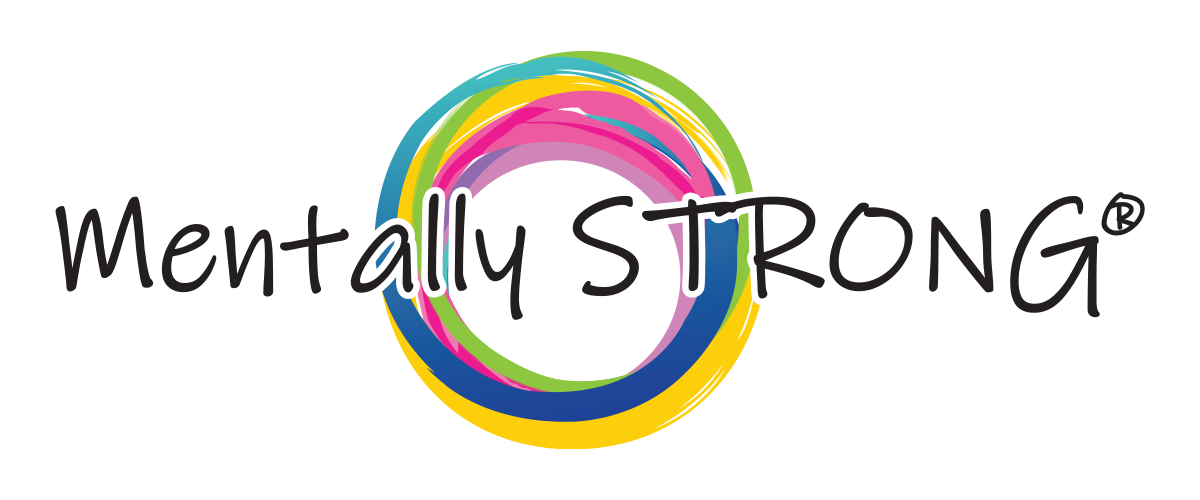Trauma bonds often arise from cycles of abuse intertwined with brief moments of affection or kindness, creating a confusing and powerful attachment. Breaking trauma bonds and healing is a challenging journey, but with the right guidance and tools, you can move forward and regain control of your life.
What Is Trauma Bonding?

Trauma bonds form in those relationships where moments of kindness are mixed with pain, leaving you questioning your worth and clinging to the hope of change. It’s not about love; it’s about survival, and that’s a hard truth to face when you’re in the thick of it. From my clinical experience and my own journey, I’ve seen how trauma can change who you are—it alters your perception and even the biochemical processes in your brain. Recognizing this isn’t a sign of weakness; it’s a step toward understanding why breaking free can feel so hard.
Defining Trauma Bonding
Trauma bonding occurs when a strong emotional connection is formed in an abusive relationship, often making it incredibly difficult to break free. These bonds aren’t rooted in love; they stem from survival instincts, developed as a response to cycles of manipulation and control. It’s important to understand that trauma bonding isn’t a reflection of your strength or resilience—it’s a natural psychological response to repeated abuse.
Have you ever wondered why it can feel so hard to leave an unhealthy relationship? Trauma bonding happens when a deep emotional connection forms in a relationship marked by unhealthy dynamics, making it tough to break away. This bond often serves different needs for each person involved. For someone displaying controlling behaviors, it might be their way to feel secure or maintain control—a response rooted in their own insecurities or fears. For the other, it could provide moments of perceived safety or affection amidst the chaos, which creates a confusing attachment. Yet, in these relationships, both people lose out. They miss the chance for genuine emotional freedom and a healthy connection. Driven by cycles of intense highs and lows, these bonds aren’t a reflection of your strength or resilience—they are a natural psychological response to the dynamics at play.
The Psychological Impact of Trauma Bonding
Trauma bonding changes how you see yourself and the world around you—it impacts your self-worth, sense of safety, and ability to trust. This isn’t just about coping with difficult emotions; it’s about navigating the deep psychological imprint left by the repeated cycles of harm and affection. The Mentally STRONG Method emphasizes the importance of recognizing these patterns and organizing your thoughts and emotions to support your healing journey.
7 Stages of Trauma Bonding
Trauma bonding unfolds in stages, each deepening the attachment and complicating the path to breaking free. Understanding these stages can help you recognize the signs and patterns in your own experiences, making it easier to take steps towards healing.
Trauma bonding often unfolds in a series of overlapping stages, each deepening the emotional attachment and making it harder to break free. These stages don’t always appear in the same way for everyone, but understanding them can provide valuable insight into the process. It helps to recognize the signs and patterns that might be playing out in your own life.
Stage 1: Love Bombing
In the beginning, there’s often an overwhelming display of affection, attention, and promises. This stage feels like the person is meeting all your emotional needs, making you feel seen and valued. It’s a powerful tactic that sets the foundation for dependency.
Stage 2: Gaining Trust and Dependency
As the relationship progresses, the abuser builds trust and fosters dependency. This is when they begin to subtly pull you away from other support systems, making you increasingly reliant on them for emotional validation and security. The more isolated you become, the stronger the bond grows.
Stage 3: Shift to Criticism and Devaluation
After trust is established, the tone shifts to criticism and devaluation. This is often when you start feeling confused because the person who once made you feel cherished now chips away at your self-esteem. The inconsistency keeps you off balance, hoping to return to the initial affection.
Stage 4: Manipulation and Gaslighting
Manipulation and gaslighting are common tactics used to maintain control. They might make you doubt your own memories, question your sanity, or feel responsible for their behavior. This stage deepens the trauma bond by keeping you disoriented and dependent on their version of reality.
Stage 5: Resignation and Giving Up
At this point, you may feel resigned, believing there’s no way out. You might start to think that this is what you deserve or that leaving is impossible. The bond feels unbreakable, and the cycle of abuse seems like an inescapable reality.
Stage 6: Loss of Sense of Self
As the bond tightens, there’s a significant loss of self. You begin to lose touch with your own needs, values, and identity, as the abuser’s influence overshadows everything. Your sense of self-worth is often tied entirely to the relationship, making it even harder to leave.
Stage 7: Emotional Addiction
The final stage is emotional addiction, where the highs and lows of the relationship become addictive. Your brain becomes wired to crave the occasional positive reinforcement, no matter how infrequent, because it feels like a reprieve from the constant negativity. This cycle is one of the most challenging aspects to break.
10 Signs of Trauma Bonding

Recognizing the signs of trauma bonding is the first step towards breaking free. These signs often manifest as confusing and contradictory feelings that keep you tied to an unhealthy relationship.
Confusing Love with Abuse
One of the most telling signs of a trauma bond is the confusion between love and abuse. You may find yourself justifying harmful behavior because of the intense emotional connection, mistaking control or possessiveness for care.
Making Excuses for Abusive Behavior
It’s common to make excuses for the abuser, blaming external factors like stress or a difficult past. This defense mechanism serves to protect the bond, even when it’s causing harm.
Feeling Unable to Leave Despite Harm
You might feel trapped, as though leaving isn’t a viable option. Despite the pain, the emotional attachment makes the idea of separation seem impossible or too overwhelming to consider.
Constantly Seeking Validation from the Abuser
Your self-worth becomes dependent on the abuser’s approval, and you find yourself constantly seeking their validation. This keeps the cycle going, as you rely on them to feel valued, even when they’re the source of your pain.
Distancing from Supportive Friends and Family
Trauma bonds often isolate you from your support network. You may find yourself pulling away from friends and family who express concern, choosing instead to defend the relationship.
Rationalizing or Minimizing the Abuse
You might downplay the severity of the abuse, telling yourself that it’s not as bad as it seems or that other people have it worse. This rationalization helps maintain the bond, keeping you in the cycle.
Feeling Responsible for the Abuser’s Actions
Another common sign is feeling responsible for the abuser’s behavior, believing that if you were different or better, things would change. This misplaced responsibility can deepen the bond, as you strive to fix or manage the abuser’s emotions.
Longing for the “Good Days” Despite the Harm
You might find yourself clinging to memories of the good moments, believing that things will go back to how they were in the beginning. This longing keeps you tied to the relationship, hoping for a return to better times.
Hoping to Change the Abuser
Many people in trauma bonds hold onto the hope that they can change the abuser. This belief keeps you engaged, thinking that if you love them enough or do the right things, they’ll eventually change.
Experiencing Emotional Dependence on the Abuser
Ultimately, trauma bonds create a deep emotional dependence, where your happiness and stability are tied to the abuser. Breaking this dependence is challenging because it feels like you’re losing a part of yourself.
Trauma Bond vs. Love
A trauma bond is built on cycles of abuse and manipulation, intertwined with fleeting moments of kindness that confuse and trap you. It’s not love—it’s a survival response. Genuine love, on the other hand, is consistent, safe, and nurturing. It doesn’t demand that you sacrifice your well-being or sense of self. Knowing these distinctions is the first step to untangling your emotions and finding the clarity you need to move forward.
Key Differences Between Trauma Bonding and Healthy Love
Healthy love doesn’t leave you questioning your worth or sanity. It’s supportive, consistent, and rooted in mutual respect. Trauma bonds, however, are marked by highs and lows, unpredictability, and emotional chaos. While love empowers and uplifts, trauma bonds drain your energy and make you feel trapped. Remember, love isn’t supposed to hurt or leave you in a constant state of fear or confusion. It’s about sharing your life with someone who respects and values you—something a trauma bond can never offer.
Why Trauma Bonds Feel Like Love
Trauma bonds can feel deceptively like love because of the powerful emotional connection they create. It’s that intermittent reinforcement—the occasional affection amid the abuse—that makes you cling to the relationship, hoping for those good moments to come back. It’s easy to confuse this intense emotional cycle with love, especially when your self-worth has been so closely tied to the abuser’s approval. But love doesn’t come with conditions or make you feel like you’re always walking on eggshells.
How to Distinguish a Trauma Bond from Real Love
Real love doesn’t require you to endure pain to prove your loyalty. It doesn’t make you feel small, trapped, or constantly on edge. Look for consistency, respect, and a genuine interest in your well-being—these are signs of healthy love. Trauma bonds, however, are about control, power, and dependency. Trust your intuition; it knows the difference even when your heart feels confused.
Why People Stay in Trauma Bonds
People stay in trauma bonds for many reasons—fear, hope, financial dependency, or simply because it feels familiar. It’s not about not being strong enough; it’s about the deep psychological hold these bonds have on you. Recognizing these reasons isn’t a sign of weakness but rather a key to reclaiming your power and making the steps toward freedom.
The Role of Intermittent Reinforcement
Intermittent reinforcement plays a huge role in why trauma bonds are so hard to break. It’s that unpredictable pattern of reward and punishment—one moment, they’re kind, and the next, they’re cruel. This inconsistency keeps you hooked, always chasing the high of the good moments, even when they’re few and far between. Understanding this dynamic helps you see that it’s not about love but about manipulation and control, which is essential in your journey to break free.
Fear of Retaliation and Isolation
Fear is a powerful tool that abusers use to keep you in a trauma bond. You might fear what will happen if you leave—retaliation, threats, or the daunting prospect of being alone. The abuser often isolates you from friends and family, making you feel like you have nowhere else to turn. This isn’t love; it’s control. Acknowledging these fears and finding safe ways to address them are critical steps in reclaiming your independence.
Hope for Change and the “Good Days” Myth
You hold on to the “good days,” believing that if you just try harder or be more patient, things will change. But trauma bonds aren’t built on genuine love or mutual respect—they thrive on unpredictability and the illusion of potential. It’s crucial to understand that waiting for change in a toxic cycle only deepens the bond, making it harder to leave. Real change requires effort from both sides, and without that, the “good days” are just a part of the cycle that keeps you stuck.
How To Break Free from a Trauma Bond
Breaking free from a trauma bond is a journey of small, intentional steps that reclaim your power and rewrite your narrative. It starts with recognizing that what you’re experiencing isn’t love and that you deserve better. This journey is about rebuilding your sense of self, creating boundaries, and surrounding yourself with support that reinforces your worth.
Recognize the Patterns
The first step to breaking a trauma bond is recognizing the patterns that keep you trapped. Notice the cycles of manipulation, the gaslighting, and the intermittent kindness that pulls you back in. Acknowledge these patterns for what they are: tactics designed to maintain control over you. By naming them, you begin to dismantle their power.
Take Small Steps Toward Independence
You don’t have to have it all figured out right away. Start with small steps—little acts of independence that remind you of your strength. This could be as simple as reconnecting with a friend, picking up a hobby you love, or setting a boundary, no matter how small. Each step is a victory and a testament to your resilience.
Seeking Support
You don’t have to go through this alone. Surround yourself with people who understand your struggle and support your journey. These might be friends, family, or support groups where you can share your experiences without judgment. There is strength in numbers, and knowing you have a network can make the process of leaving feel less daunting.
Creating Boundaries
Boundaries are not walls—they are lines that protect your peace and well-being. Establishing boundaries is essential in breaking a trauma bond, as it helps to redefine the terms of how you’re willing to be treated. It’s okay to say no, to distance yourself, and to prioritize your own needs.
Therapy and Professional Help

Seeking professional help is often a critical step in breaking free from a trauma bond. Therapists can offer a safe space to unpack the complex emotions and provide strategies tailored to your situation. Therapy isn’t about fixing you—it’s about equipping you with the tools to understand your patterns, heal from past wounds, and empower you to make decisions that serve your best interests.
At the Mentally STRONG Clinic, we use the Mentally STRONG Method, a unique approach combining cognitive behavioral therapy and organizational techniques to help you navigate your journey to healing. This method not only addresses the emotional impact of trauma bonds but also empowers you to rebuild your self-worth and reframe your narrative. Our goal is to provide the support and guidance you need to break free and reclaim your life. Remember, seeking help is not a sign of weakness—it’s a powerful step towards your freedom and healing.
Building a New Narrative Beyond the Trauma
To heal, you have to rewrite your story and move beyond the narrative that you’re trapped in a trauma bond. Start by setting small, achievable goals that reflect the life you want to lead, not the life dictated by the bond. Celebrate your progress, no matter how minor it seems, and remind yourself that you are building a life that reflects your true self, free from manipulation and control.
Your Path to Freedom: Healing and Breaking Trauma Bonds
You deserve to reclaim your freedom—freedom from the cycle of abuse, from self-doubt, and from the narrative that has kept you feeling small. Recognize your worth and understand that you deserve love that is safe, consistent, and respectful. Your path to freedom will have ups and downs, but with each step, you are choosing yourself. You are choosing a life where you are seen, valued, and honored for who you truly are, without the weight of a trauma bond holding you back.
Trust in your strength, seek support when you need it, and know that healing is not just possible—it’s within your reach. At Mentally STRONG, we are here to walk this journey with you. If you’re ready to take the next step toward your healing, schedule an appointment with us today. Let’s work together to break those bonds and build the fulfilling, healthy life you deserve.

